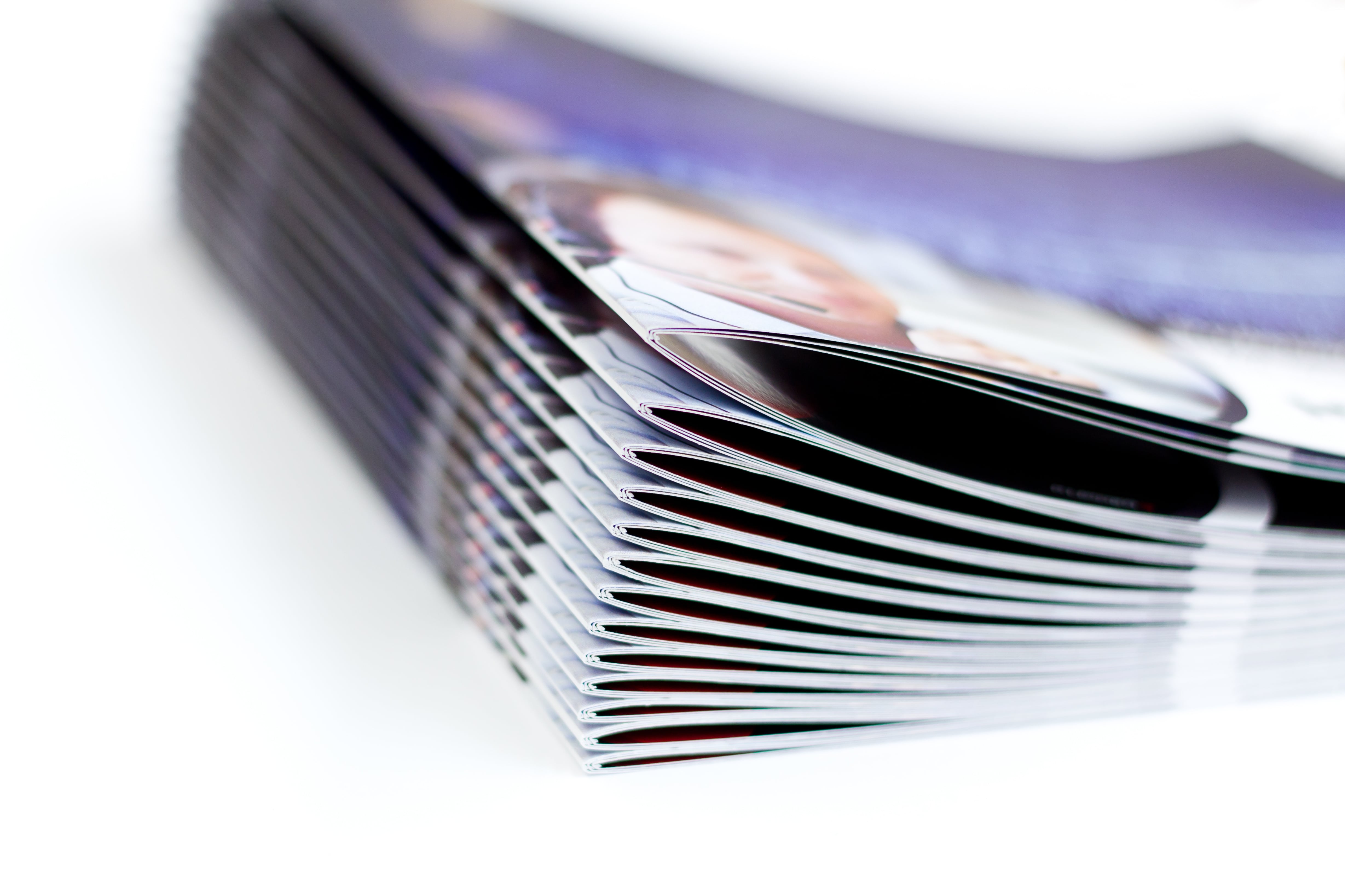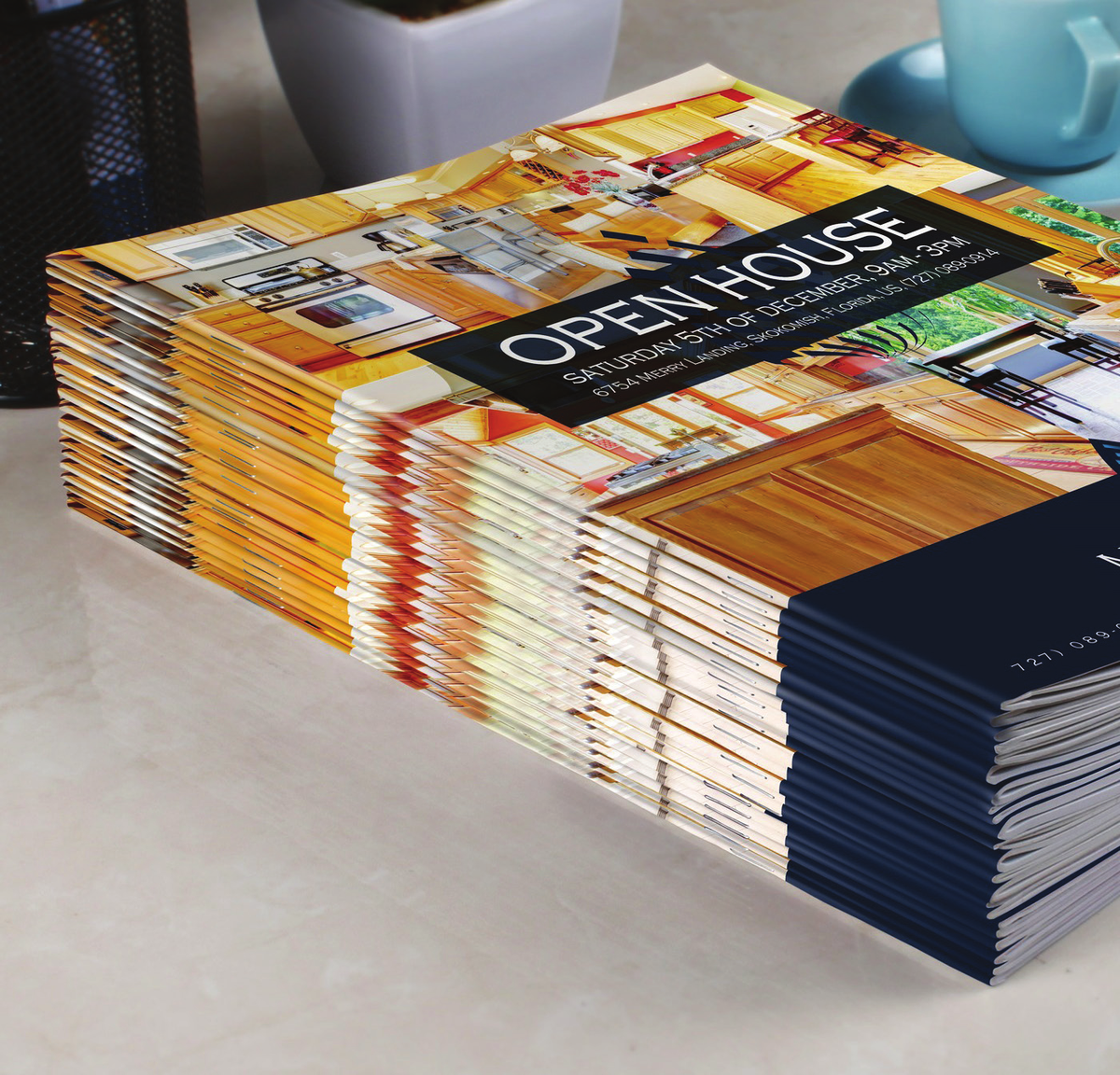Booklet Printing FAQs: Everything You Need to Know Before You Order
Booklet Printing FAQs: Everything You Need to Know Before You Order
Blog Article
The Essential Overview to Understanding Brochure Printing Options and Techniques
The process of brochure printing involves multiple factors to consider that can considerably influence the end product. From selecting the appropriate format and size to recognizing the subtleties of binding methods, each choice plays a crucial duty. Additionally, factors such as paper supply and printing methods further affect the performance of the pamphlet. As one browses these choices, it becomes imperative to grasp just how they adjoin and what that suggests for the general outcome.
Understanding Booklet Layouts and Sizes
When thinking about brochure printing, understanding the different styles and sizes available is essential for attaining the desired presentation. Booklets can be generated in countless layouts, consisting of saddle-stitched, spiral-bound, and perfect-bound, each offering distinct benefits. Usual sizes vary from basic letter (8.5 x 11 inches) to smaller options like A5 (5.8 x 8.3 inches), permitting adaptability based upon web content and target audience.Selecting the proper dimension can affect both the layout and viewers involvement. Larger dimensions might match aesthetically driven content, while smaller sized formats may be extra straightforward and mobile. Furthermore, the number of web pages influences the selection of binding method, as thicker brochures might need stronger bindings. Inevitably, understanding these facets enables a more customized approach, making sure that the end product lines up with the intended message and visual, boosting the general effectiveness of the communication.
Choosing the Right Paper Stock

Binding Approaches: Factors To Consider and alternatives
When it comes to binding techniques for pamphlets, numerous choices are offered, each with distinctive benefits. Saddle stitch binding supplies an affordable solution for thinner booklets, while perfect binding methods give an even more polished look for thicker publications. Wire-O binding stands out for its durability and simplicity of use, making it ideal for papers that call for adaptability.
Saddle Stitch Binding
Saddle stitch binding offers a economical and sensible service for constructing booklets, making it a popular option amongst services and publishers. This binding approach involves folding sheets of paper in fifty percent and stapling them along the fold line, developing a neat and orderly look. Commonly appropriate for pamphlets with a lower page matter, saddle sewing is optimal for magazines, sales brochures, and training products. The simpleness of this technique permits quick production and is commonly favored for short runs or promotional things. Nevertheless, it is vital to note that saddle stitch binding might not be appropriate for thicker brochures, as the spine may not stand up under increased weight. On the whole, it remains a trustworthy option for numerous printing jobs.
Perfect Binding Methods
Perfect binding is a widely used strategy that offers a expert and polished surface to booklets and publications. This method involves gluing the web pages with each other at the spinal column utilizing a solid adhesive, permitting a tidy side and the capability to hold a bigger variety of web pages compared to saddle sewing. Perfect binding is especially suitable for thicker booklets, such as magazines and yearly records, where a durable, level spinal column is preferred. Additionally, it offers the option for a published cover that can be made to boost visual appeal. Factors to consider such as web page matter, paper weight, and the intended use of the brochure should be taken right into account, as they can affect durability and general high quality.
Wire-O Binding Options
Wire-O binding, known for its resilience and versatility, uses an outstanding choice for pamphlets that call for very easy web page turning and a professional appearance. This binding approach utilizes a series of metal loopholes that hold pages firmly, enabling them to lie level when open. It is specifically ideal for discussions, magazines, and handbooks as a result of its durable nature. Wire-O binding is offered in numerous colors and diameters, accommodating various web page matters and thicknesses. In addition, it allows the incorporation of tabs and covers, boosting the pamphlet's total aesthetic. Factors to consider for Wire-O binding include the selection of cable shade, the dimension of the loops, and the degree of modification wanted, all of which can greatly influence the end product's look and capability.
Digital vs. Offset Printing: Which Is Best for You?
When picking a printing approach for brochures, comprehending the differences between electronic and counter printing is important. Digital printing utilizes modern technology to create high-grade prints promptly and economically, making it optimal for short runs or projects needing quick turnaround times. It enables personalization, giving the capability to print on-demand with minimal waste.In contrast, counter printing is a standard technique that succeeds in producing large amounts with regular quality. It includes transferring ink from a plate to a rubber blanket, then to the paper, which causes lively colors and precise details. Balance out printing generally calls for longer configuration times and is more cost-efficient for larger volumes.Ultimately, the option in between digital and offset printing depends on task needs, spending plan, and wanted quantity. For tiny, time-sensitive projects, digital may be the very best option, while countered might be preferable for bigger, high-grade productions.

Creating Your Brochure: Tips and Best Practices
When making a pamphlet, cautious interest to format, font option, and shade use can considerably enhance its performance. A well-structured format overviews the visitor's eye, while appropriate font styles ensure readability and share the wanted tone. Additionally, reliable use shade can evoke feelings and emphasize key info, making the general style much more impactful.
Selecting the Right Design
Exactly how can one properly pick the appropriate format for a pamphlet? great site Initially, it is vital to review the booklet's purpose and target audience. A tidy, arranged layout enhances readability and engagement. Using a grid system can aid in straightening components constantly, developing a professional look. Additionally, incorporating aesthetic hierarchy through varying sizes and placements of images and message can assist the reader's eye and stress crucial information. It is also vital to leave adequate white room, which protects against congestion and enables for much better focus. Lastly, checking various designs via mock-ups can offer insight right into how the style performs in real-world situations, making sure that the final item satisfies both practical and visual requirements.
Picking Appropriate Typefaces
A well-chosen font style can considerably enhance the overall design of a booklet, enhancing the layout and reinforcing the material's message. The choice of fonts ought to think about readability, especially for body message, as it assures the info comes to all visitors. Sans-serif fonts are commonly liked for electronic formats, while serif fonts can offer a standard feeling in published products. It's advisable to restrict font selections to two or three to maintain aesthetic comprehensibility. Additionally, font size plays an essential duty; headings ought to be distinctive yet not overwhelming, while body message ought to be comfortable for reading. When picking fonts, positioning with the brochure's style and target audience is essential for reliable communication and aesthetic allure.
Reliable Use Color
Color functions as an effective device in brochure layout, directing and shaping perceptions reader feelings. It can evoke sensations of calmness, trust, or excitement, depending upon the tones selected. Designers need to consider shade concept principles, making sure that the selected scheme straightens with the brochure's message and target market. As an example, utilizing cozy shades like red and orange can create necessity, while cooler tones like blue and environment-friendly foster tranquility.Additionally, contrast plays an essential duty; corresponding colors can improve readability and visual appeal. Uniformity in color usage throughout pages additionally reinforces brand identity and cohesion. Ultimately, effective color application not only captures attention but likewise enhances the brochure's purpose, making it a crucial facet of effective style.
Ending Up Touches: Coatings and Unique Effects
While numerous take into consideration the content and layout of a pamphlet the most important elements, the ending up touches, such as layers and unique results, play an essential duty in enhancing its overall appeal. Coatings can provide security and resilience, making sure that the brochure endures damage. Matte surfaces use an advanced, non-reflective surface area, while shiny finishes can make shades show up more captivating and vivid. Unique effects, like embossing or foil marking, add a responsive dimension that can produce a memorable perception. These strategies can highlight details areas, attracting focus to vital info or producing aesthetic passion. Additionally, UV layer can give a high-shine coating that elevates the total look.Together, these completing touches not just improve the brochure's visual yet also communicate expertise and interest to information, eventually leaving an enduring useful site influence on the visitor.
Expense Factors To Consider for Booklet Printing
Comprehending the different cost considerations for pamphlet printing is essential for companies and organizations aiming to optimize their budget plans. Key factors influencing expenses consist of the option of binding, paper, and ink approaches. Better products, such as exceptional paper or specialized inks, usually increase the general expenditure. Additionally, the size and page count of the brochure play a considerable duty; larger booklets call for even more resources and time to produce.Another vital consideration is the printing technique, whether electronic or balanced out, as each has its very own rates structure and viability for various quantities. Services should additionally consider design expenses, which can differ based on complexity and the use of expert solutions. Eventually, shipping and handling fees can contribute to the overall, particularly for huge orders. By examining these elements, organizations can make enlightened decisions that line up with their economic abilities while accomplishing the wanted top quality in their published products.
Regularly Asked Inquiries
What Are the Ecological Impacts of Booklet Printing?
The ecological effects of pamphlet printing consist of deforestation from paper click here to find out more production, carbon exhausts from transportation, and waste generation from discarded products - Booklet Printing. Lasting techniques, such as utilizing recycled paper and environment-friendly inks, can reduce these impacts
How Can I Ensure Shade Accuracy in My Pamphlet?
To ensure color accuracy in a pamphlet, one should use calibrated monitors, use specialist color profiles, perform examination prints, and pick premium printing solutions that supply color matching and proofing alternatives for best outcomes.
What Is the Typical Turn-around Time for Brochure Printing?
The regular turn-around time for brochure printing varies relying on the complexity and amount - Booklet Printing. Typically, it ranges from a few days to 2 weeks, influenced by elements such as printing techniques and ending up needs
Exist Minimum Order Quantities for Brochure Printing?

Can I Print Booklets in Several Languages?
Printing pamphlets in several languages is possible. Numerous printing solutions provide alternatives for multilingual or multilingual formats, permitting reliable interaction. Careful preparation assurances that design aspects accommodate numerous languages without compromising readability or aesthetic appeals. Furthermore, aspects such as paper supply and printing strategies more affect the effectiveness of the booklet. When taking into consideration pamphlet printing, comprehending the different styles and dimensions offered is necessary for accomplishing the preferred discussion. When picking a printing technique for booklets, comprehending the distinctions between digital and offset printing is essential. In addition, the dimension and page count of the booklet play a significant function; bigger brochures require even more resources and time to produce.Another important factor to consider is the printing strategy, whether electronic or balanced out, as each has its own rates structure and viability for various amounts. The ecological effects of brochure printing consist of deforestation from paper production, carbon discharges from transport, and waste generation from discarded products.
Report this page